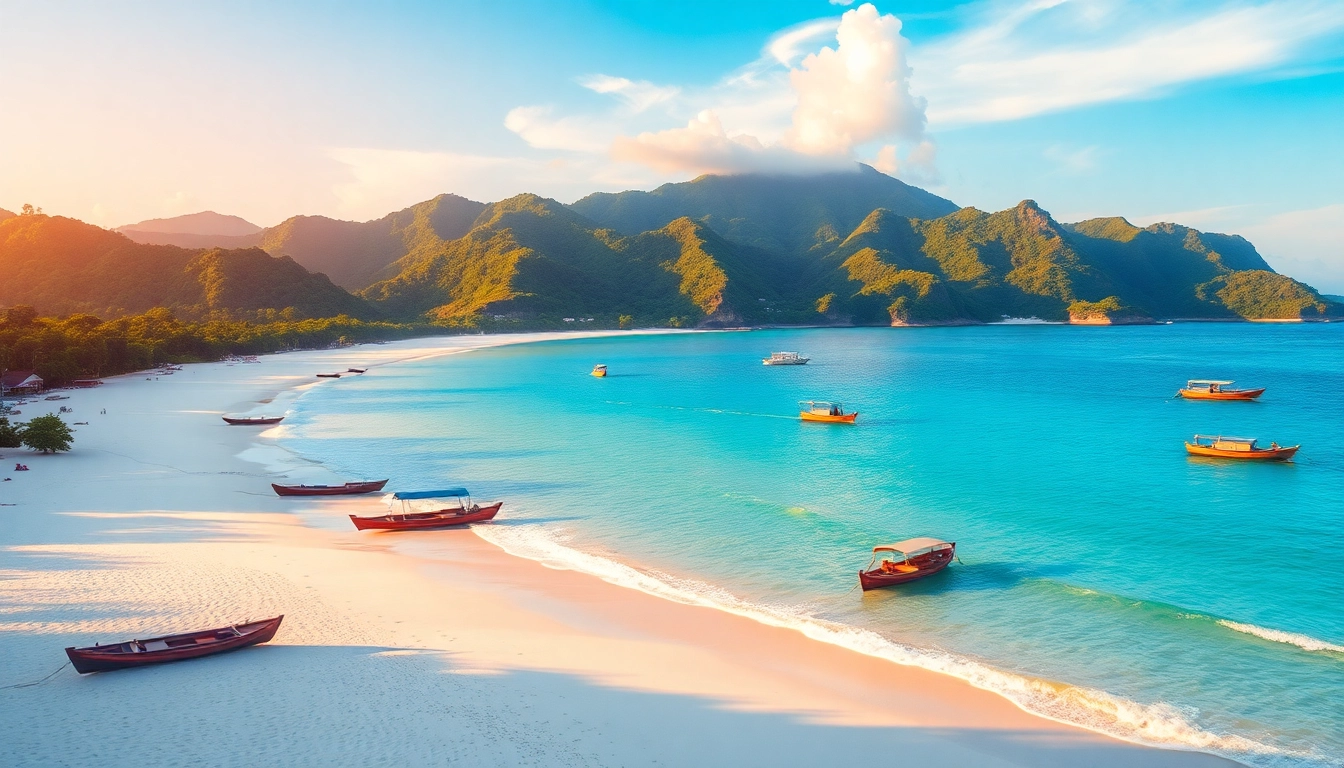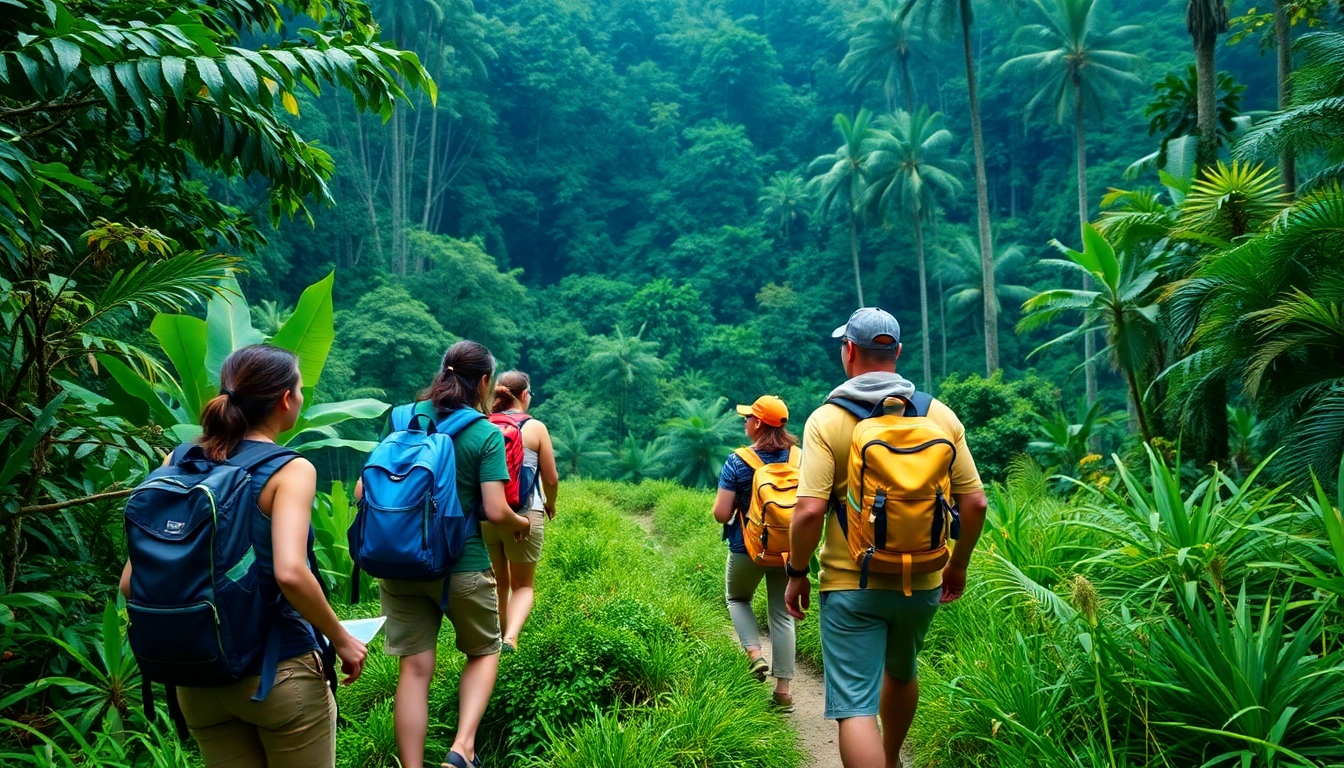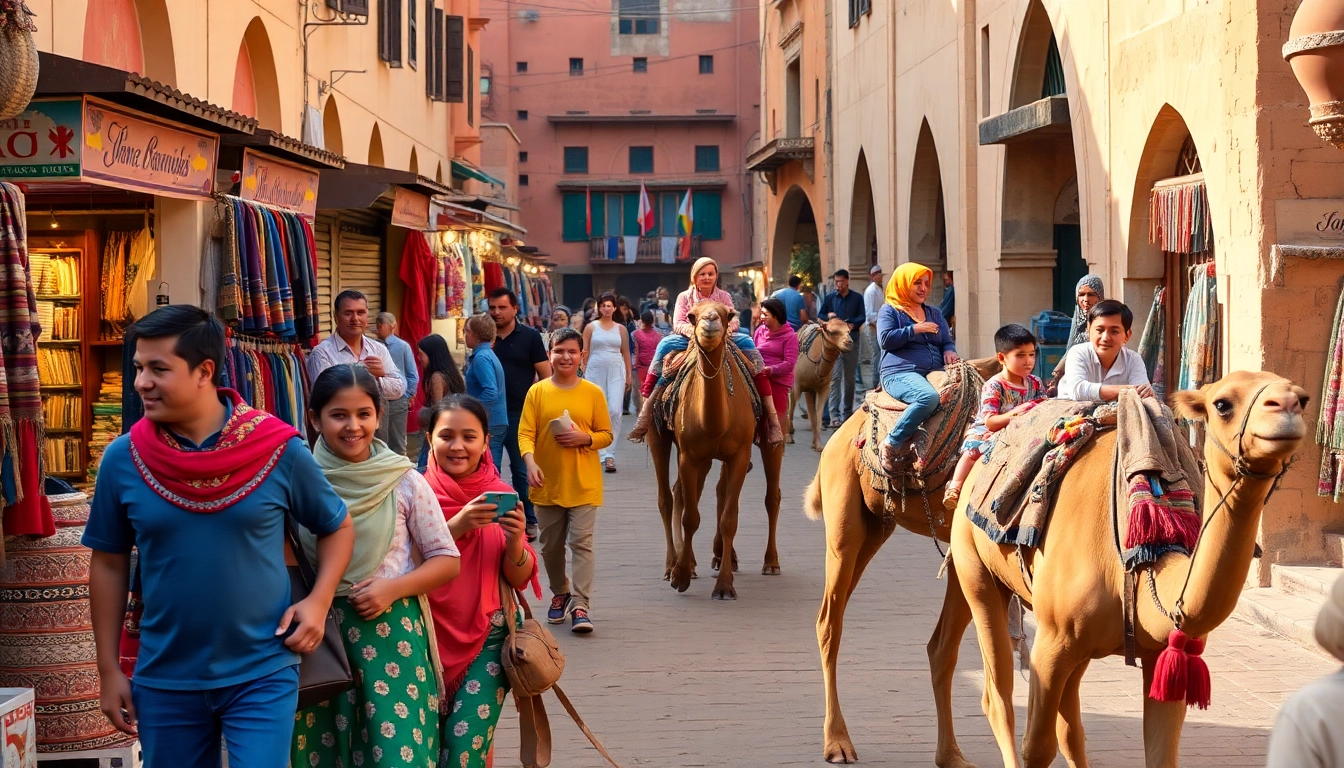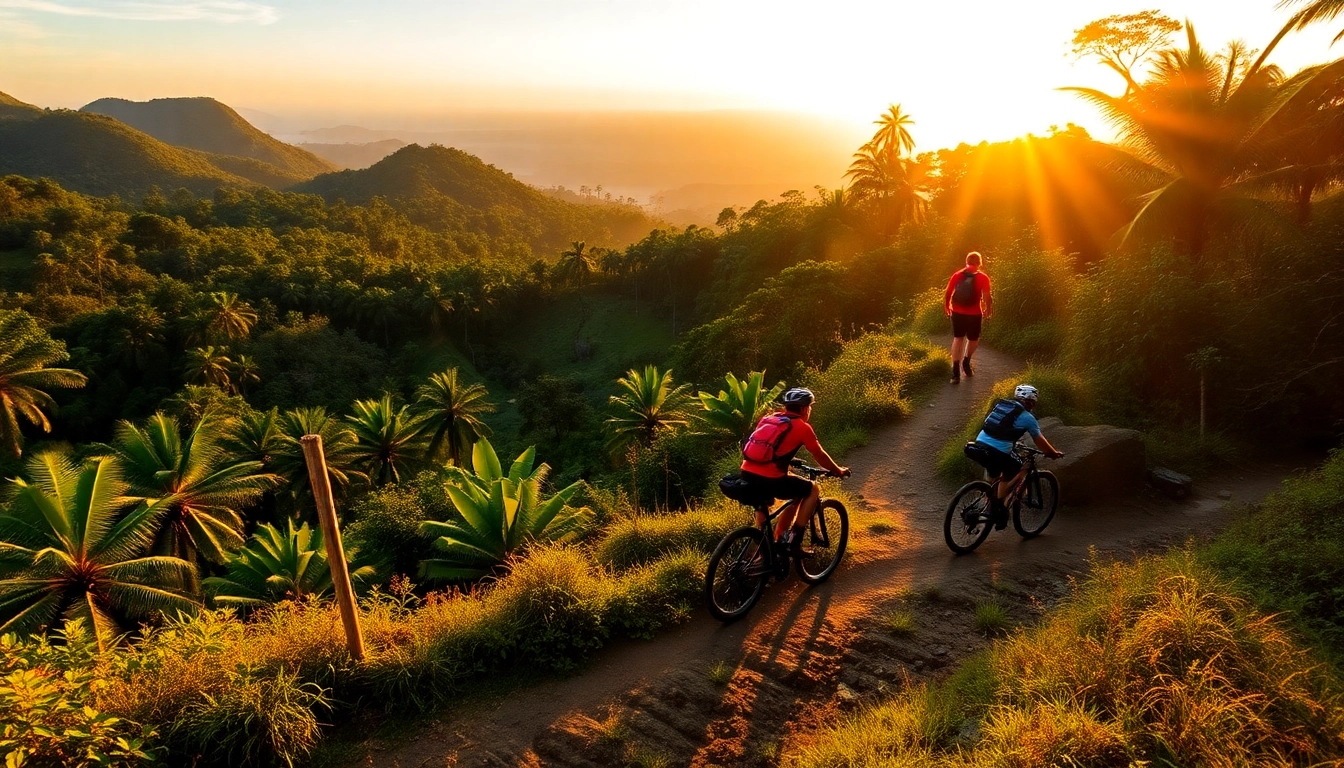Introduction to Lombok: Indonesia’s Enchanting Island
Located in the heart of the Indonesian archipelago, Lombok is a captivating island that boasts a rich tapestry of natural beauty, cultural heritage, and adventurous pursuits. Often overshadowed by its more renowned neighbor Bali, Lombok offers a more authentic and tranquil experience for travelers seeking untouched landscapes, vibrant traditions, and unique attractions. With a population nearing four million residents, this island is not just a destination but a reflection of Indonesia’s diverse cultural mosaic and pristine environment. Whether you’re an avid eco-adventurer, a cultural enthusiast, or a leisure-seeker, Lombok’s multifaceted appeal ensures a memorable journey. This comprehensive guide explores its geographical significance, historical background, natural wonders, cultural richness, and practical travel tips to help you uncover the island’s hidden treasures and plan your unforgettable adventure.
Geographical Location and Significance of Lombok
Sitting strategically within the Lesser Sunda Islands chain, Lombok forms part of the West Nusa Tenggara province, comprising multiple regions that each contribute uniquely to the island’s allure. It is separated from Bali by the Lombok Strait, a narrow body of water that is crucial for maritime navigation and ecological diversity. The island spans approximately 4,700 square kilometers, characterized by a rugged coastline dotted with pristine beaches and coral reefs, and a central mountainous terrain dominated by the iconic Mount Rinjani, Indonesia’s second-highest volcano. Geographically, Lombok’s location makes it a critical hub for both biodiversity and tectonic activity, with its active volcanic landscape continuously shaping its topography and ecosystem.
The island’s strategic position offers impressive views of neighboring islands and is a gateway to exploring other parts of Indonesia’s Nusa Tenggara region. Its proximity to Bali (roughly 35 kilometers) makes Lombok an accessible extension of Indonesian travel itineraries, yet its unique terrain and cultural makeup set it apart. The island’s diverse geography fosters a wide array of ecosystems—from coastal mangroves and coral reefs to lush forests and volcanic highlands—making Lombok a vital natural sanctuary and a magnet for eco-tourists and nature lovers alike.
Historical Background and Cultural Heritage
Rich in history, Lombok’s cultural fabric is woven through centuries of indigenous traditions and external influences. The predominant ethnic group, the Sasak people, have inhabited the island for thousands of years, maintaining a unique cultural identity that distinguishes Lombok from other Indonesian islands. Their ancient customs, rituals, and crafts provide a window into a thriving society rooted in animism, Hinduism, and later, Islam—a syncretic blend that continues to influence daily life.
Historical records suggest that Lombok was once part of maritime trade routes connecting Indonesia with India and China. The island was also influenced by colonial powers, notably the Dutch, who established strategic forts and administrative centers during colonial rule. The remnants of these colonial structures, alongside traditional sites, reflect a complex history that has shaped Lombok’s social and political landscape.
Today, Lombok’s cultural heritage remains vibrant, exemplified by traditional ceremonies, new wave of arts and crafts, and the preservation of Sasak architectural styles. Key cultural sites include local mosques, ancient stone temples, and Sasak villages where traditional weaving, pottery, and dance are still actively practiced. Festivals like Bau Nyale—a sea worm hunt—embody the enduring connection between local customs and natural phenomena, offering travelers authentic insights into Lombok’s cultural soul.
Why Lombok Stands Out Among Indonesian Islands
While Indonesia is famed for its thousands of islands, Lombok distinguishes itself through a perfect blend of natural splendor and cultural authenticity. Unlike the tourist-heavy Bali, Lombok favors a more laid-back and unspoiled ambiance, appealing to travelers looking for serenity and raw beauty. Its diverse landscapes—from towering volcanoes and lush rice terraces to white sandy beaches—offer unparalleled opportunities for exploration and adventure.
Furthermore, Lombok’s strategic emphasis on sustainable tourism ensures that its natural and cultural resources are preserved for future generations. The island is rapidly gaining recognition for eco-friendly resorts, community-based tourism initiatives, and conservation programs aimed at protecting endemic species and fragile ecosystems.
Specific features that set Lombok apart include the majestic Mount Rinjani, which provides challenging treks and stunning vistas, and the Gili Islands—three small pristine islands renowned for snorkeling and diving. The island’s vibrant local culture, warm hospitality, and variety of outdoor activities create a holistic travel experience, making Lombok a truly distinctive destination among Indonesia’s diverse archipelago.
Top Natural Attractions and Activities in Lombok
Mount Rinjani: Indonesia’s Second Highest Volcano
Rinjani stands as the crown jewel of Lombok’s natural attractions. Standing at 3,726 meters, it is the second-highest volcano in Indonesia and a magnet for mountaineers and trekkers worldwide. The Rinjani trek is renowned for its stunning landscape variations, including a crater lake (Segara Anak), geothermal springs, and panoramic views of the surrounding islands and peaks.
Embarking on a Rinjani hike requires preparation, guidance from experienced local guides, and a certain level of physical fitness. The typical multi-day trek spans 3-4 days, with the summit reaching dawn for spectacular sunrises. This adventure not only offers physical challenge but also deep immersion into the island’s volcanic geology, flora, and fauna, such as endemic bird species and rare orchid varieties.
To maximize safety and enjoyment, travelers should choose reputable tour operators, understand weather conditions, and pack appropriate gear. The Rinjani experience encapsulates Lombok’s allure for adventure seekers and nature lovers, providing unforgettable memories of one of Southeast Asia’s most iconic volcanic landscapes.
Beautiful Beaches: Tanjung Aan, Senggigi, and Gili Islands
Lombok’s coastline is a treasure trove of stunning beaches that cater to different tastes and activities. Tanjung Aan is celebrated for its powdery white sand, clear waters, and relaxed atmosphere—ideal for sunbathing, picnicking, and snorkeling. Its unique pebble-like sand formations and nearby traditional fishing villages add to the charm.
Senggigi Beach is the most developed and popular among tourists for its vibrant nightlife, beachfront resorts, and surf breaks suitable for beginners and experienced surfers alike. It serves as a perfect base for exploring Lombok’s coastal attractions or enjoying sunset cocktails overlooking the ocean.
The Gili Islands—Gili Trawangan, Gili Air, and Gili Meno—are world-famous for crystal-clear waters, lively marine life, and laid-back island vibes. These islands are hotspots for snorkeling, diving, and marine conservation activities. Gili Trawangan, in particular, is known for its energetic nightlife and wide range of accommodations, while Gili Meno offers tranquility and pristine nature for those seeking solitude.
Engaging in water-based activities such as scuba diving with manta rays or exploring vibrant coral reefs enriches visitors’ experiences, emphasizing Lombok’s reputation as an aquatic paradise.
Waterfalls and Nature Reserves for Eco-Adventures
Beyond the beaches and volcanoes, Lombok boasts several waterfalls and protected areas offering immersive eco-adventures. Sendang Gile and Tiu Kelep waterfalls, nestled in the Mount Rinjani National Park, are among the most iconic. Trekking through lush greenery to these cascading waters reveals a tranquil setting perfect for swimming, photography, and spiritual reflection.
Further inland, the Gunung Rinjani Forest Reserve protects diverse flora and fauna, including rare orchids, exotic birds, and rare mammals. Eco-tourists can participate in guided nature walks, wildlife observation, and conservation programs aimed at habitat preservation.
The Selong Belanak and Mawun beaches are excellent spots for surfing, beach volleyball, and relaxing amidst untouched nature. These areas serve as perfect backdrop for eco-sensitive tourism, emphasizing sustainable practices such as waste reduction, local community involvement, and habitat restoration.
Unique Cultural Experiences and Local Traditions
Traditional Sasak Villages and Crafts
Central to Lombok’s cultural identity are the Sasak people, whose villages offer a glimpse into ancient traditions. Visiting villages such as Sade or Sukarara exposes travelers to traditional Sasak architecture—stylish bamboo and timber houses with woven bamboo walls—and artisanal crafts like intricate weaving, pottery, and basketry.
Participating in hands-on workshops or observing local artisans at work deepens appreciation for the craftsmanship that sustains the community’s livelihood. The weaving of Sasak textiles, often in geometric patterns, is not only a cultural skill but also a vital symbol of identity, worn during important ceremonies.
Preservation of these traditional skills is vital for cultural continuity and economic resilience, making visits to Sasak villages both educational and empowering for local communities.
Festival Events and Cultural Performances
Lombok’s cultural calendar is rich with festivals and performances that showcase its vibrant heritage. The Bau Nyale Festival, held annually in Lombok Tengah, celebrates the arrival of sea worms (Nyale) and symbolizes the legend of Princess Mandalika. Participants engage in traditional sea hunts, dance performances, and communal feasts.
Other festivals include the Tanjung Pesona Festival, which features traditional dance, music, and culinary exhibitions, attracting both locals and tourists. Cultural performances, such as Gendang music and traditional Sasak dances, are often staged during these events, providing immersive experiences into island customs.
Attending these festivals offers travelers authentic interactions with locals and insight into the spiritual and social values embedded in Lombok’s traditions.
Sampling Lombok’s Authentic Cuisine
Local cuisine embodies the flavors and ingredients that define Lombok’s identity. Highlights include Ayam Taliwang, a spicy grilled chicken marinated with chili, garlic, and shrimp paste, and Plecing Kangkung, a fresh water spinach salad with chili and lime. Seafood fresh from the surrounding waters is often served grilled or in local curries.
Specialties like Sate Rembiga and Lawar (a vegetable and meat salad) reflect influences from neighboring regions and historical trade routes. Street food markets and traditional warungs (local eateries) provide affordable and authentic dining experiences. Don’t miss Tepo Tepo—a traditional Sasak rice cake dish—offered during cultural festivals.
Sampling local dishes not only satisfies culinary curiosity but also supports local economies and encourages cultural preservation through culinary arts.
Tourist Tips: Visiting Lombok Smartly and Safely
Best Time to Visit for Climate and Festivals
The most favorable time to visit Lombok is during the dry season, which runs from May to September. During these months, the weather is warm, sunny, and ideal for outdoor activities like trekking, snorkeling, and beach lounging. Peak tourist influx occurs in July and August, so planning ahead is essential for securing accommodations and avoiding crowded sites.
To experience local culture at its vibrant best, plan your visit around festivals like Bau Nyale (typically in February) or other regional celebrations. Off-peak travel from October to April is possible but comes with increased chances of rain and sea waves, potentially limiting certain activities.
Travel Essentials and Local Transportation
Arriving in Lombok is possible via Lombok International Airport, which connects with major Indonesian hubs and some international destinations. Once on the island, transportation options include rental scooters, private drivers, and shuttle services. For longer distances between regions, public buses and minivans are available but may lack comfort and schedule consistency.
For eco-conscious travelers, hiring local guides not only enriches the experience but also supports community-based tourism. Taxis and ride-hailing apps are increasingly available in urban areas, offering convenient alternatives for exploring attractions safely.
Accommodations and Sustainable Tourism Practices
Lombok offers a range of accommodations from luxury resorts and boutique hotels to eco-friendly lodges and homestays. Many establishments now incorporate sustainable practices such as solar power, waste recycling, and respectful interaction with local communities.
Choosing eco-conscious options helps preserve Lombok’s natural beauty and supports local livelihoods. Additionally, travelers are encouraged to minimize plastic use, refrain from disturbing wildlife, and participate in community-based tourism initiatives to ensure their visit contributes positively to the island’s ecological and cultural integrity.
Planning Your Lombok Adventure: From Sightseeing to Relaxation
Itinerary Ideas for Different Types of Travelers
For adventure seekers: Start with a trek up Mount Rinjani, followed by a relaxing day at Gili Trawangan for snorkeling and nightlife. Combine this with a visit to waterfalls and eco-reserves.
For cultural enthusiasts: Dedicate time to exploring Sasak villages, attending local festivals, visiting temples, and participating in craft workshops. Don’t miss authentic culinary experiences and traditional performances.
For leisure and wellness travelers: Focus on beachfront resorts, spa retreats, and yoga classes. Schedule days for lounging on Tanjung Aan, enjoying sunrise views, and indulging in local delicacies.
Creating a balanced itinerary ensures a fulfilling experience regardless of travel goals, blending outdoor adventure, cultural immersion, and relaxation.
Recommended Tours and Tour Guides
Partnering with reputable tour operators ensures safety, local knowledge, and meaningful interactions. Look for guides certified by local tourism authorities who speak fluent English and have experience in eco-tourism and cultural tours.
Popular tours include Rinjani trekking packages, island-hopping tours to Gili islands, snorkeling excursions, and village cultural tours. Private guides can customize experiences based on your interests, pace, and comfort level.
Must-Download Apps and Resources for Visitors
- Lombok Tourism Official App: Provides maps, festival info, accommodation listings, and emergency contacts.
- Google Maps: Essential for navigation, finding local eateries, and planning routes.
- WhatsApp: Widely used for communication with guides, accommodations, and transport providers.
- Weather Apps: Stay updated on local weather patterns for outdoor activities.
- TripAdvisor & Google Reviews: For insights on best attractions, eateries, and accommodations with traveler feedback.



